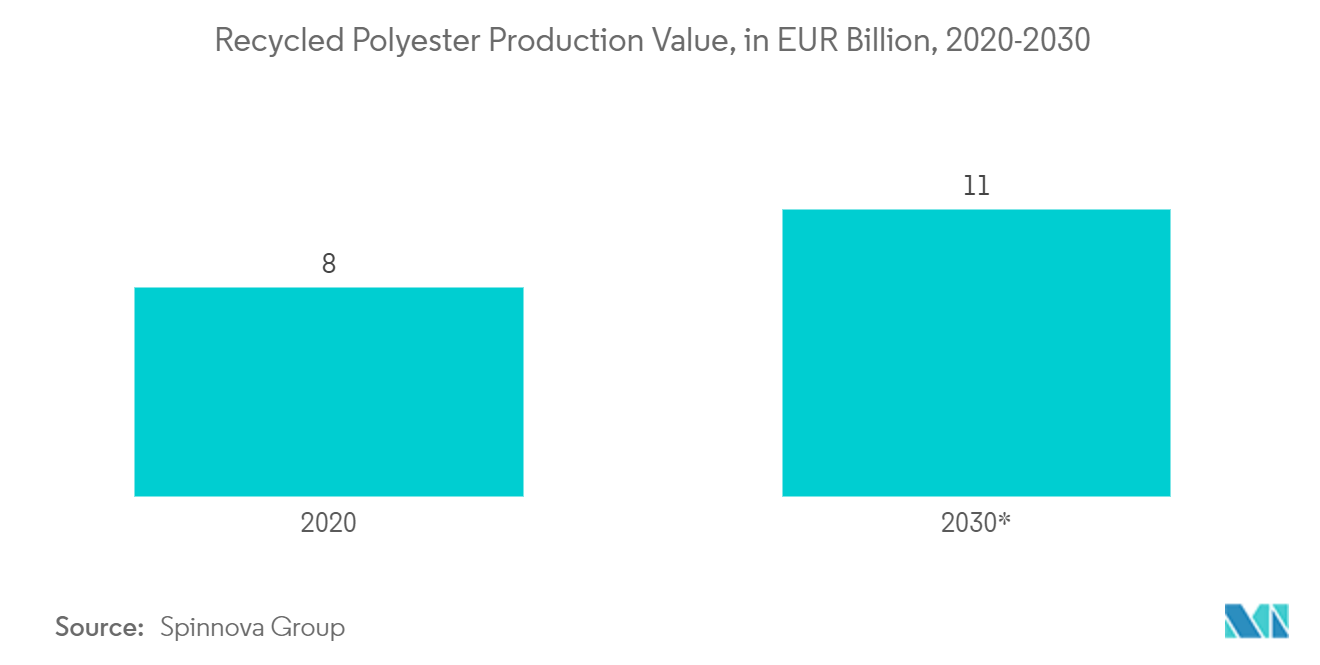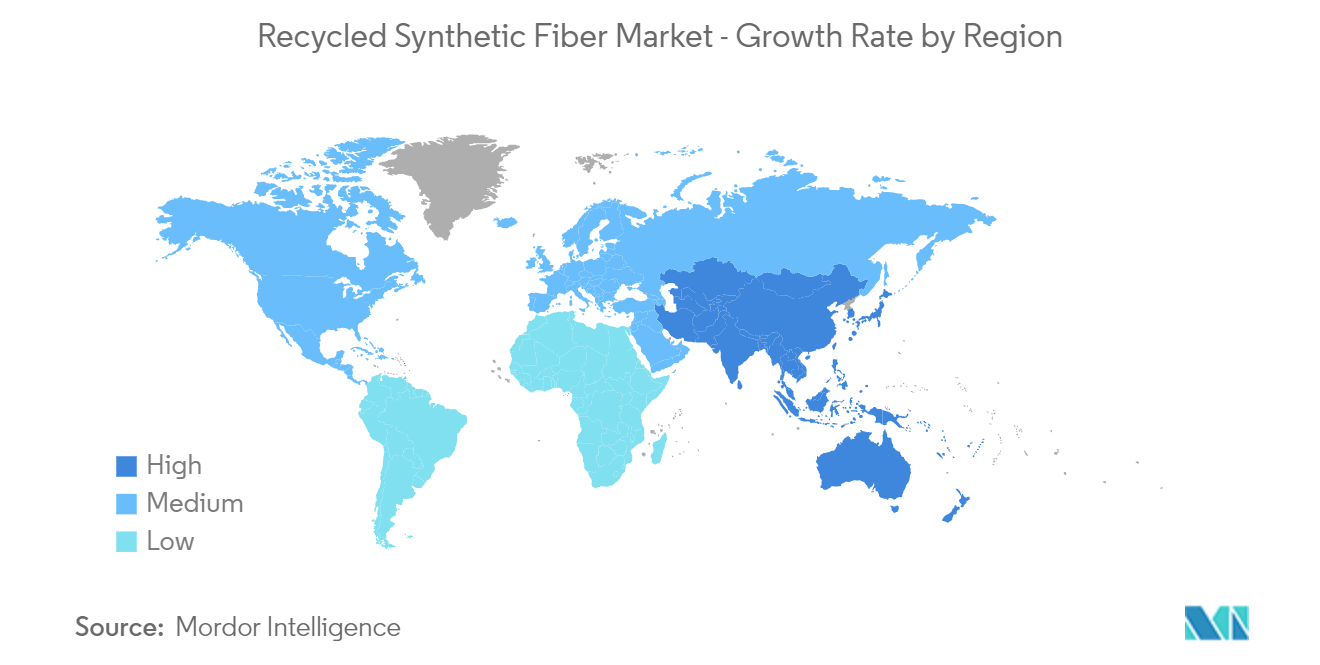Market Trends of Recycled Synthetic Fiber Industry
Clothing Application to Dominate the Market
- The two most common forms of recycled synthetics are recycled polyester and recycled nylon polyamide. Recycled polyester is obtained by melting down existing plastic and re-spinning it into new polyester fiber.
- The global fiber market is dominated by polyester, as the production of one ton of recycled polyester saves 11,100 kWh of energy, equivalent to two years of energy consumption for an average household.
- Recycled synthetic fibers such as polyester and nylon are widely used in the textile and apparel industries to make fabrics for athletic and fashion clothing. It contains recycled plastic fibers extracted from PET plastic bottle waste.
- In 2021, synthetic fibers accounted for approximately 64% of the global textile fiber production volume. Among all the types of synthetic fibers, polyester alone had a market share of 54%, while polyamide and other synthetics accounted for 5% each. The demand for polyester fibers is expected to reach 63 million metric tons by the end of 2023.
- These synthetic fibers can be recycled mechanically and chemically. For instance, polyester is pulverized, melted, and then spun into new fibers. The demand for recycled polyester is high in the niche markets of sports and outdoor wear, as well as in the fashion industry.
- According to TOAD&CO, a United States-based manufacturer of eco-friendly clothing, it takes about nine bottles to make one T-shirt. All the recycled polyester fibers from the company are made from 100% post-consumer plastic bottles with the Global Recycling Standard (GRS) certification.
- According to Textile Exchange, in 2021, 109 brands and retailers and 23 suppliers and manufacturers, including Adidas, Reebok, H&M Group, and others, committed to using 45% to 100% recycled polyester fibers in their products by 2025.
- In 2022, H&M increased the amount of recycled materials in products to 24% and the share of more sustainably sourced materials to 84%, making good progress towards achieving the sustainable goals.
- According to the company, the compounds used to make these fibers come from fossil-fuel-derived resources. The company aims to phase out virgin polyester by 2025, primarily using textile-to-textile recycling. In 2022, 74% of the total polyester production came from recycled sources.
- According to statistics from the Textile Exchange, recycled polyester represents 14% of fashion's polyester market. By 2025, the total recycled polyester capture is expected to be at least 45%. There is a long-term vision to bring this number up to 90% by 2030.
- Therefore, the above-mentioned pointers are expected to fuel the demand for synthetic fibers globally in the years to come.

Asia-Pacific Region to Dominate the Market
- Asia-Pacific is anticipated to dominate the market owing to its massive growth in the clothing and automotive sectors.
- The increasing use of polyester fiber in sportswear, activewear, and others is driving its demand in the garment industry, propelling the growth of the market. Polyester fiber demand is also benefiting from a surge in its use as a cotton alternative due to its cost, thinness, and availability in various styles and colors.
- The volume of the apparel market in the Asia-Pacific region is expected to amount to 97.08 billion pieces by 2027. The revenue in the sports and outdoor wear segment is projected to reach USD 38.75 billion by the end of 2023.
- In October 2022, approximately three billion meters of clothing fabric were produced in China. According to the National Bureau of Statistics (NBS), the textile production volume reached an all-time high of USD 46 billion in November 2022.
- In fiscal year 2021, the production volume of synthetic fibers across India amounted to about 3.2 million metric tons, a decrease of 18.2% in comparison to the previous year.
- The textile industry in India is one of the oldest and most crucial sectors. According to the International Trade Administration, India is the world's second-largest manufacturer of textiles after China. In 2021, India exported textiles and apparel for USD 209.63 million, a 30% increase as compared to the previous year.
- In 2022, China's exports of polyester yarn reached a new high. The total export of polyester yarn was 535 kt, up 15% year over year. Whereas, the total imports were 2kt, down 49.9% year on year.
- Therefore, the aforementioned factors are expected to boost the demand for synthetic fiber in the Asia-Pacific region in the coming years.


